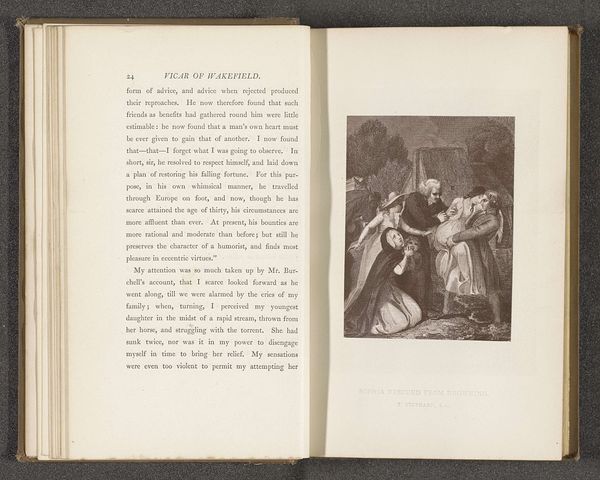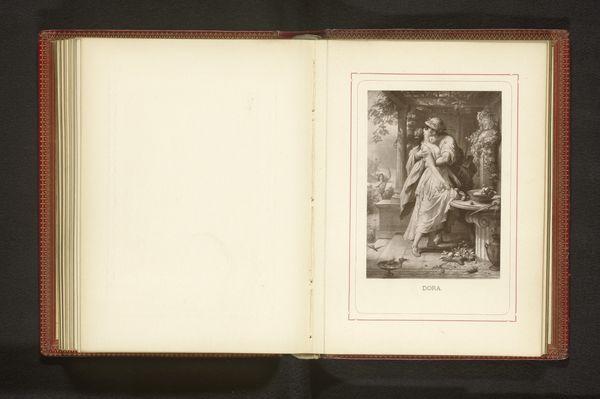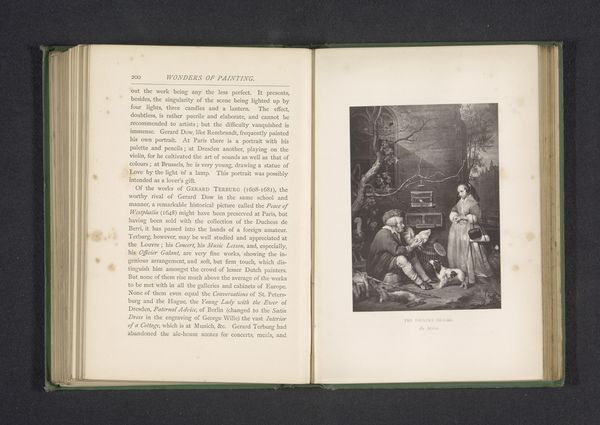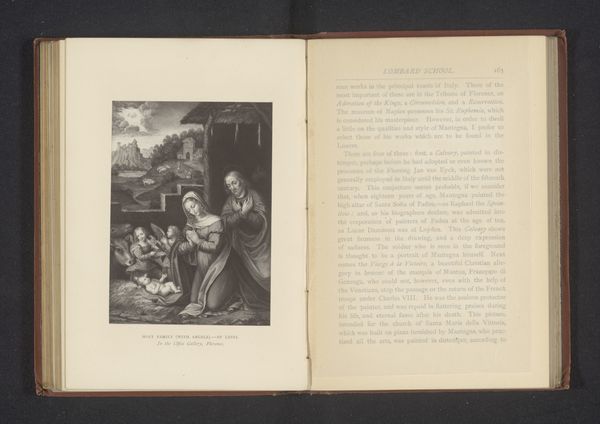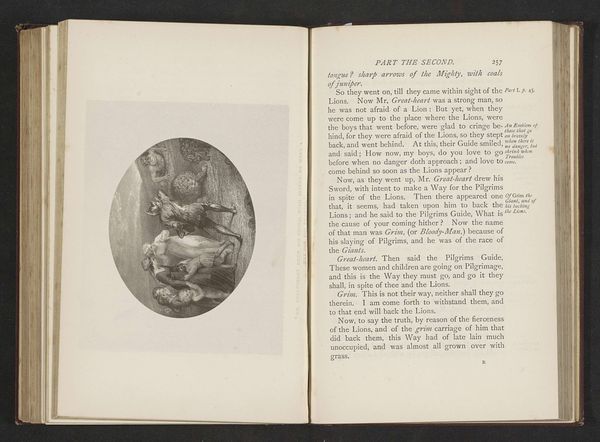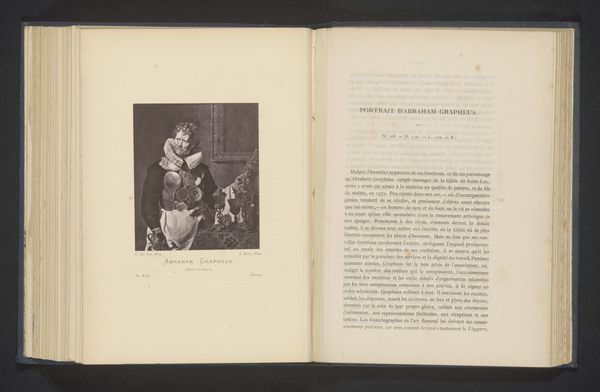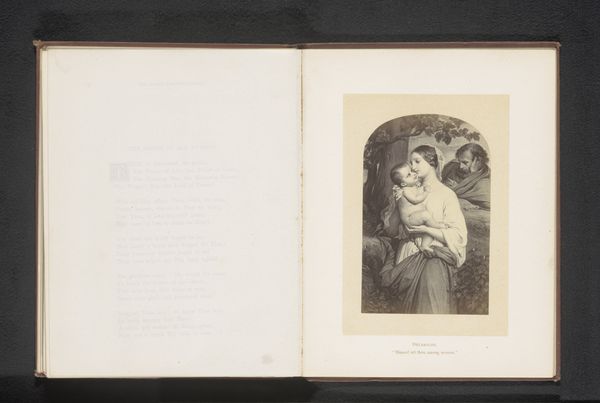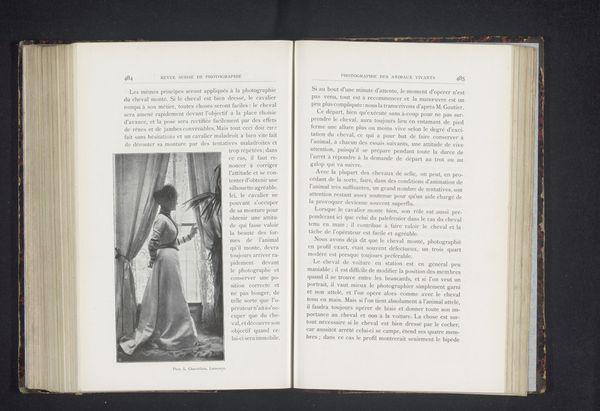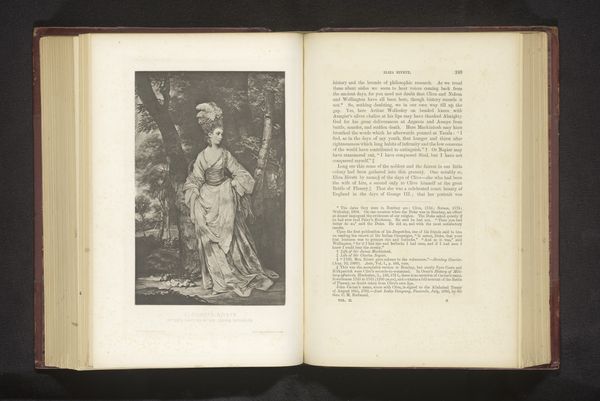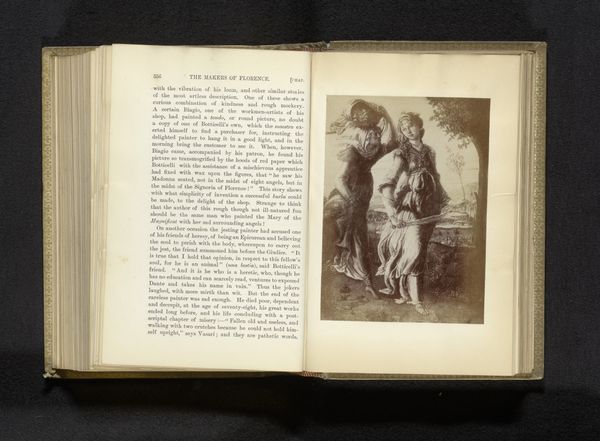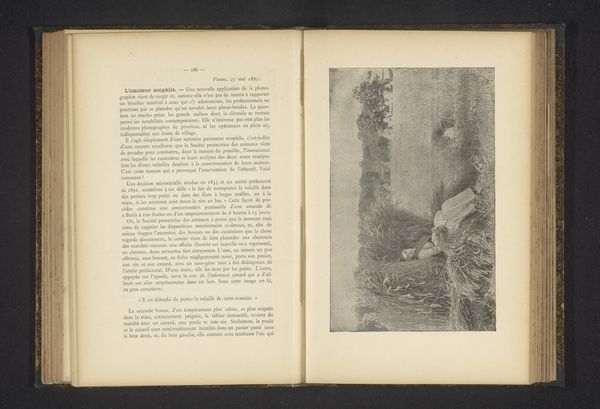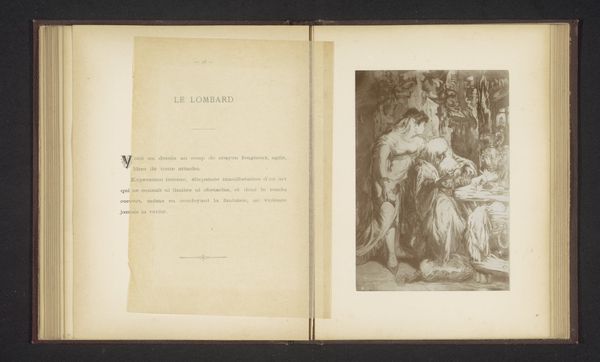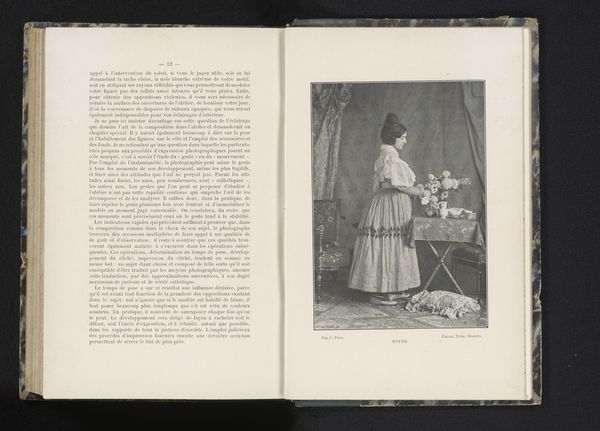
Fotoreproductie van een prent door Thomas Stothard, voorstellend een illustratie voor The Vicar of Wakefield door Oliver Goldsmith before 1880
0:00
0:00
lithograph, print, etching
#
aged paper
#
book binding
#
homemade paper
#
paper non-digital material
#
narrative-art
#
lithograph
#
paperlike
# print
#
etching
#
sketch book
#
paper texture
#
folded paper
#
history-painting
#
letter paper
#
paper medium
Dimensions: height 114 mm, width 84 mm
Copyright: Rijks Museum: Open Domain
Curator: Let's turn our attention to this reproduction of a print, believed to be made before 1880, illustrating a scene from Oliver Goldsmith's "The Vicar of Wakefield," and attributed to Thomas Stothard. My first thought: the texture feels important, doesn't it? I'm immediately drawn to the aged paper's visual and, frankly, tactile quality. Editor: Yes, the print's substrate speaks volumes, especially its texture as an element of construction. The lines of the etching or lithograph pull our gaze across a scene centered on social dynamics – there is definitely some performative spectacle in action here. I think, if you are anything of a Victorian novel enthusiast, like myself, the paper almost whispers stories to us, evoking a certain historical gravitas to the composition. Curator: Indeed! This historical connection is crucial, particularly regarding how such works entered public consciousness. I think this is likely lithography. As a widespread method of production for literary and artistic prints, lithography democratized visual access in this time period. Can you see how the artist’s strategic light play defines space, carving out a stage where these actors in Goldsmith’s narrative play out their social dance? Editor: I certainly do. It feels very staged, with a clear separation of those watching from those who perform in Goldsmith’s scene from *The Vicar*, but looking beyond this isolated setting, its impact spreads through cultural, social, and even institutional environments such as literary gatherings, museums, even education. I also would say that we need to consider not just the artwork itself but the literary canon in which it exists. This illustration’s role underscores both the period’s values and Goldsmith’s enduring narratives around status and aspiration. Curator: Looking at this from an almost molecular perspective, it shows the importance of line and composition in pre-photographic image reproduction. Here, Stothard distills complex interactions down to precise, deliberate arrangements—almost like he is prefiguring a filmic still. See the gestures, for instance, as how they indicate class tension within Goldsmith's writing. Editor: Seeing this reproduced as it is offers us a direct, yet slightly faded lens, which reveals past eras where stories held substantial meaning while their aesthetics resonated beyond literary boundaries. Curator: A poignant insight, underscoring just how deeply form mirrors the spirit of the times that create art and writing together.
Comments
No comments
Be the first to comment and join the conversation on the ultimate creative platform.
